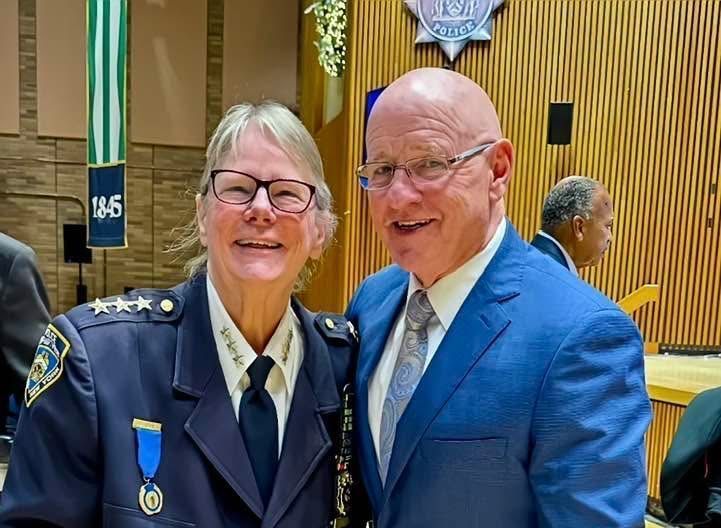[caption id="attachment_71990" align="aligncenter" width="600" caption="Stephen Jangro and Cristina Torres star in “In the Wilderness.”"]
“In the Wilderness” * Written By John Kearns * Directed by Richard P. Butler * Starring Stephen Jangro and Cristina Torres * The Theatres at 45 Bleecker St. (between Lafayette and Mott), NYC * Remaining dates, Thursday, June 14 at 10 p.m. and Sunday, June 17 at 2 p.m.
From the moment the girls of St. Philomena’s high school begin to “conversate,” as one of them later puts it, we are transported to the South Bronx. The hip thrusts, the exaggerated hand gestures channeling rap videos, the dialogue, all hit just the right note and reassure the audience that it is in safe hands to be led through the concrete jungle depicted in the play “In the Wilderness.”
The author knows his territory. John Kearns, playwright and novelist, taught in the South Bronx in the 1980s, the period in which the play is set.
In reality, the crack epidemic has peaked but this area, sitting on affluent Manhattan’s doorstep, still encompasses the poorest zip code in the U.S.
Kearns’s play is running as a fundraiser for a Bronx charity the Mercy Center and as part of a theater festival created to use theater for social activism: Planet Connections Theatre Festivity, now in its fourth year.Under those circumstances, you might expect something worthy but dull. Fear not, if you plan to attend one of the two remaining performances in this short run.
In making its point, the play is fast paced and witty—like the streetwise kids Paul Logan (Stephen Jangro) has come to teach. Within his first year on the job his lofty goal of saving his 100 charges has been reduced to a desire to make a difference to one. Sensitive Carmen Marquez (Cristina Torres) shows real talent as a writer and Mr. Logan is happy to give her extra tuition.
Maybe too happy. ‘”Who is saving whom?” the play asks and, ultimately, Can anyone be saved?”
The play likens Mr. Logan’s labors to those of Sisyphus, the character in Greek mythology forced to roll a boulder up a hill… and then to start over, unrelentingly. Other characters, including Carmen, have soliloquies in which they, too, see themselves as Sisyphus.
Spoiler alert: one of the last times we see Carmen she expresses in her soliloquy the temptation to let the boulder go. Mr. Logan and the audience both are just as swiftly let down in the play’s abrupt ending. It’s unsatisfying, yet somehow apt.
Back at the bottom, like Sisyphus, Mr. Logan ends the play with the question, “What do I do now?” And the audience can almost hear Samuel Beckett answer, “You must go on”.
Unlike Beckett, Kearns has a light touch, so it’s a playful trip to a serious conclusion. The writing flirts with the scenario of “you show me yours and I’ll show you mine,” as Carmen and Mr. Logan, just eight years her senior, describe showing each other their poems. They don’t cross the line, but Carmen underscores it with perfect lip-biting, lid-batting, bursting enthusiasm, as when she asks: “You saw my similes?!”
Student Tawana (Nirayl Wilcox) and teacher Bill Thorpe (Edward Raube-Wilson) also stood out among generally excellent actors.
Hannah Timmons’s character, Ms. Farrell, it should be said, was jarring and distracting in several respects, especially in a poorly directed scene where the adults in the school inexplicably yell at a distressed child.
This pivotal scene where we learn that Carmen has begun skipping school is way overdone by Mr. Logan and Ms. Farrell. And it concludes without exploring why Carmen had a mystery doctor’s visit in a play that has unwanted pregnancy as a drumbeat.
Still, the off-notes do not overwhelm a play that is more entertaining, and more worthy, than most Broadway shows.










